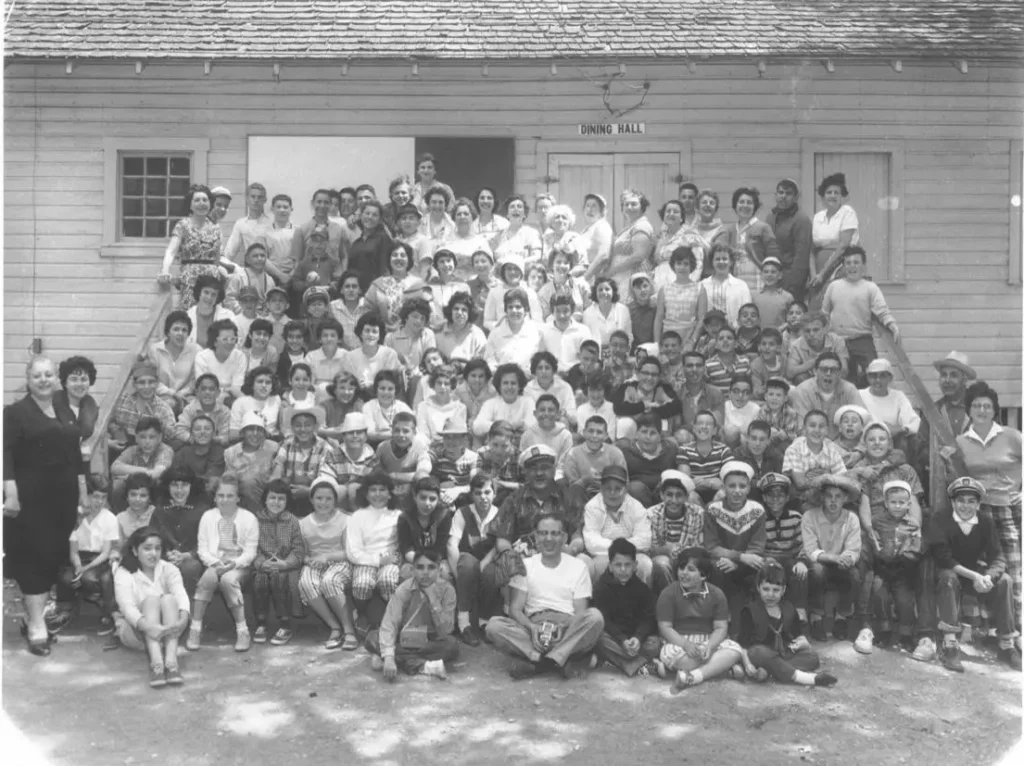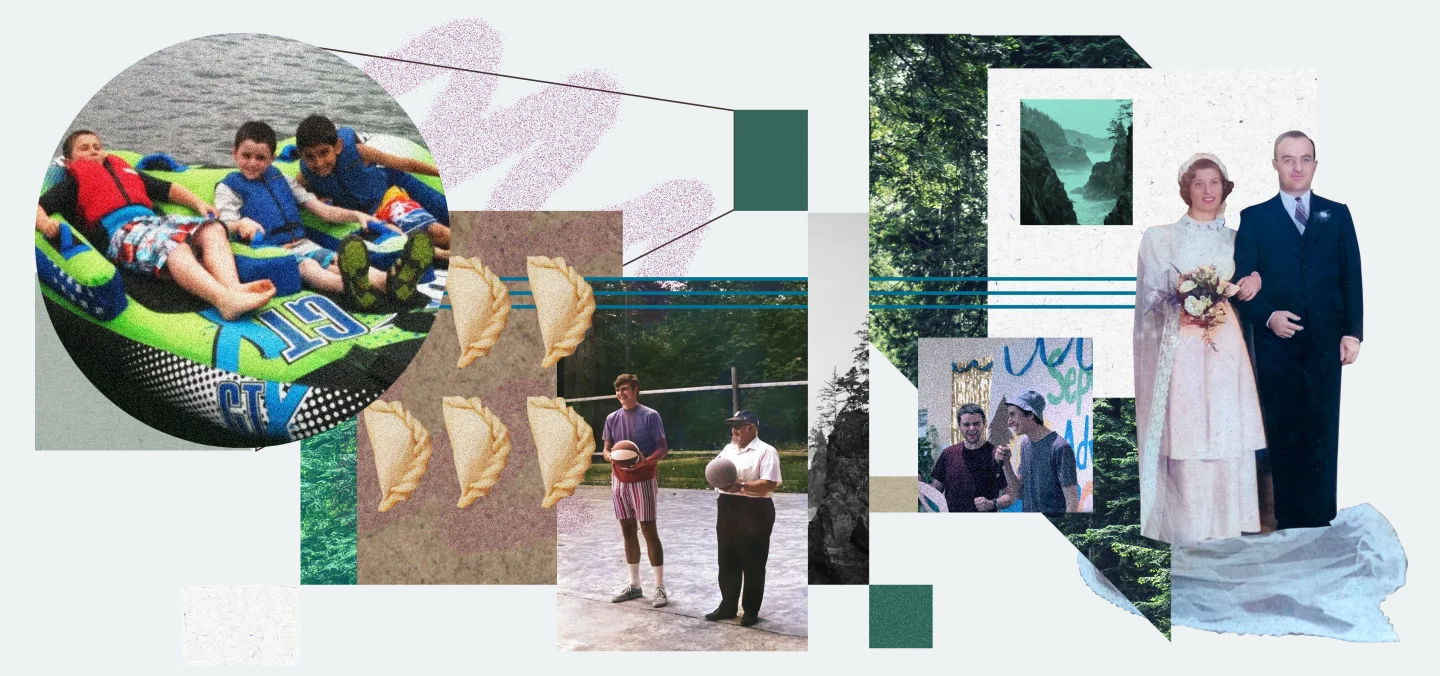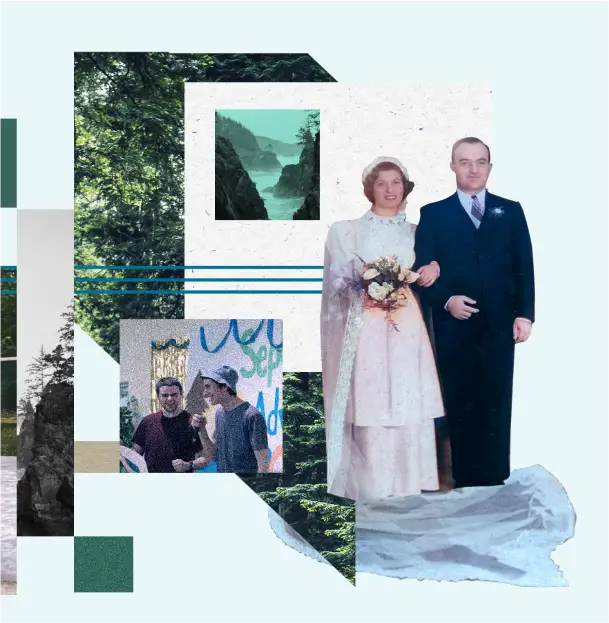Surrounded by the serenity of an evergreen forest, the snug fragrance of our delicious boreka and kuajado lunch still filling the air of the large room where all of us sit, about 150 summer campers join together to punctuate the moment with a spirited rendition of the Shabbat hymn, Ki Eshmera Shabbat. Some know the tune well, while others are learning it for the first time. A few of the young campers select the pizmon they’d like to sing next, and Haham nods approvingly.
This is Sephardic Adventure Camp (SAC), the only summer youth retreat in the U.S. designed expressly to preserve Sephardic tradition, instill values of our heritage and build leadership skills among the youth who come to the Pacific Northwest-based camp from all over the country — and even across the globe.
I can speak to SAC’s mission through firsthand experience. My father, Michael, was a camper as a child and later served as a camp counselor. As young parents, he and my mother enrolled me in the camp for eight straight summers. Following my father’s lead, I also graduated from camper to camp counselor and now, after spending several years studying at yeshivot in both Jerusalem and New York City, I am a member of SAC’s professional staff, serving as head of education.
As I got married this past summer, I have begun to think about my wife and I starting a family one day and sending our own children to SAC, just as their grandparents did. To me, Sephardic Adventure Camp is one of the many lifecycle events of the Benoliel family.
The origins of Sephardic Adventure Camp date back about 70 years. It began modestly as an idea percolating in the mind — and heart — of Rabbi Solomon Maimon, who was the brother of my great-grandmother. At the time, Rabbi Maimon was the energetic young leader of Sephardic Bikur Holim, one of two Sephardic synagogues operating within six blocks of each other in Seattle.
Rabbi Maimon tapped a few of the young parents in the congregation and offered to take their children on a three-day weekend summer camping trip where they would observe Shabbat together in the woods, enjoy traditional Sephardic meals, sing songs in Hebrew and Ladino, and effectively celebrate the Turkish Sephardic heritage that the community held so dear.
The makeshift camp turned into an annual summer tradition, which grew into a longer camp that took place each year on Vashon Island, near Seattle. Congregation Ezra Bessaroth — the city’s other Sephardic synagogue, which was founded by immigrants from the island of Rhodes — eventually started its own camp. In the late 1980s, the two camps merged and eventually branded as Sephardic Adventure Camp. As the number of campers grew, SAC formed as a legal entity, put a board in place and hired year-round employees.

Today, it is a three-week sleepaway camp that maintains the original mission of preserving Sephardic tradition through education, activities and camaraderie. Most of the campers hail from the Seattle area, but each year they are joined by kids (some Sephardic, some not) from Jewish communities in other states, such as California, Oregon, Arizona, Alaska, Texas, New York, Maryland, Massachusetts and Florida. Some arrive from other countries, including Canada, Israel and Spain.
The kids leave their families to join a bunk, where counselors just a little older than them are in charge. Campers are not allowed to have phones, allowing them to immerse themselves into the world of camp. The camp becomes a mini-society, with its own norms, traditions and roles, separate from the outside world. The community extends year to year, with many of the kids growing up to become counselors and staff members, just as I did.
Many families have been at camp through multiple generations. My papoo (grandfather) was too old to be a camper when Rabbi Maimon launched the camp, but for years he drove luggage up to the campsite each summer. My father attended camp for nine years. I started in B1, the youngest boys’ bunk, back in 2010, and other than in 2020 (when COVID canceled plans for camp), I’ve attended every year since as either camper, counselor-in-training, counselor, or staff. My story is not unusual. In fact, many campers are second or third generation at SAC.
At a Maimon family picnic in 1978, my father’s cousins convinced him to come to camp for the first time. My noni and papoo signed him up, and the next morning, off to camp he went. As a child going to sleepaway camp for the first time, he recalls being nervous, but when he finally arrived, he was calmed by a familiar image. In the kitchen, his Uncle Ike, Auntie Rae, Uncle Jack, Auntie Louise, and many family friends were baking and cooking classic Sephardic food. Still today, community members who don’t work for the camp visit nearly every day.
Even as the campsites, directors, and parts of the culture have changed, the institution, with its particular way of doing things, always feels the same. ”
My mother, Rinah, is one who visits regularly. She was born in an Ashkenazi family in New Jersey, but when she married my father, she immediately began to learn about all kinds of our Turkish Sephardic customs. When they were newly married, my father’s nona (my great-grandmother) came to stay at their apartment in Manhattan. My mother wasn’t sure what to make for Shabbat lunch, so my great-grandmother said, “We’ll make borekas, huevos haminados, a salad, and that’s lunch!” When my mother admitted she had no idea how to make the borekas or the huevos haminados, Nona responded, “Oh, mi alma (a Ladino term of endearment meaning “my heart”), I’ll teach you!” and the two of them spent the afternoon preparing a traditional desayuno.
Now, years later, though she’ll deny it, my mother is an expert in Sephardic baking and cooking. She and other mothers and grandmothers come up to camp each summer to teach the kids how to make our unique delicacies. Others will visit for a Shabbat, join as scholars-in-residence or come to run one of the various traditional activities. Children sometimes celebrate their bar or bat mitzvahs at camp, with their families and friends attending. By bringing the community into the bubble of camp, family traditions are passed down once again.
I always have seen SAC as my second home, and I’m not the only one. Even as the campsites, directors, and parts of the culture have changed, the institution, with its particular way of doing things, always feels the same.
It feels like SAC. It feels like the Sephardic community in which I was raised.
SAC is unique in that it is a direct extension of the Seattle Sephardic community, which is quite unique in and of itself. Many of the traditions and practices of the camp come directly from the two synagogues that created it, reflecting the Ottoman heritage that — even with demographic changes among Seattle Sephardim over the years — continues to be the cultural spine of the city’s community.
The majority of SAC campers, counselors, staff, and board are members of Seattle’s Sephardic community. Our full-time Haham, Rabbi Aryeh Greenberg, is a former camper and a true expert in our customs and liturgy. His father, Rabbi William Greenberg, led Congregation Ezra Bessaroth for nearly a generation and, like Rabbi Maimon (who served Sephardic Bikur Holim as Rabbi Emeritus until his passing in 2019 at age 100), supported SAC for many years.
Many Jewish sleepaway camps represent a denomination or specific group of Jews, but few are so intertwined with a particular local community as SAC.
Being tied to a live community allows for a certain kind of authenticity. What we do at camp is a natural reflection of the practices and values of the community. When we sing Ya Komimos after the Birkat Hamazon blessing, it is not a statement; it’s just what we do. That doesn’t mean that we don’t do things intentionally. It’s just that even our intentional education reflects what our particular community values, making my job as head of education much simpler than it might be at other camps.
Somewhat counter-intuitively, being tied to a particular community with particular customs allows SAC to be a naturally welcoming place. We are an organic community, which means staff and campers with other customs aren’t seen as a challenge, but rather an extension of who we are. Many members of the SAC community don’t have Turkish or Rhodesli backgrounds. The approach taken with those who have different Sephardic or Mizrahi backgrounds is to continue to feature our Seattle traditions at the camp while learning about the others. Each year, one of our three Shabbatot features a Moroccan Kabbalat Shabbat, and we have events every summer that highlight different Sephardic customs and rites.
At SAC this past summer, Sara Avrahamy, our programming director, and Sarah Aroeste, a world-renowned Ladino singer and author, created an event for our camp titled “La Boz” (which is Ladino for “The Voice”). Each bunk learned and performed a Ladino song in a competition similar to the TV show of the same name. One bunk learned Ken Supiense, the Ladino version of the classic Pesach song Ehad Mi Yode’a (Who Knows One), while another learned Kuando el Rey Nimrod, which tells the story of Avraham Avinu. It was the kind of event that could only happen in the world of Sephardic Adventure Camp — centuries-old songs, learned anew.
I find it telling that a significant portion of the membership and leadership at both Sephardic Bikur Holim and Ezra Bessaroth once were SAC campers, counselors and/or staff. In this way, SAC has supported the transmission of history and customs not just on an individual level, but on a communal level. The Seattle Sephardic community supports SAC, which in turn supports the resilience of the community itself.



